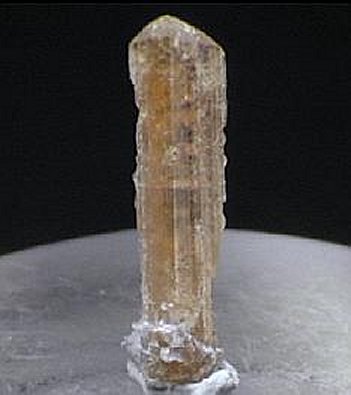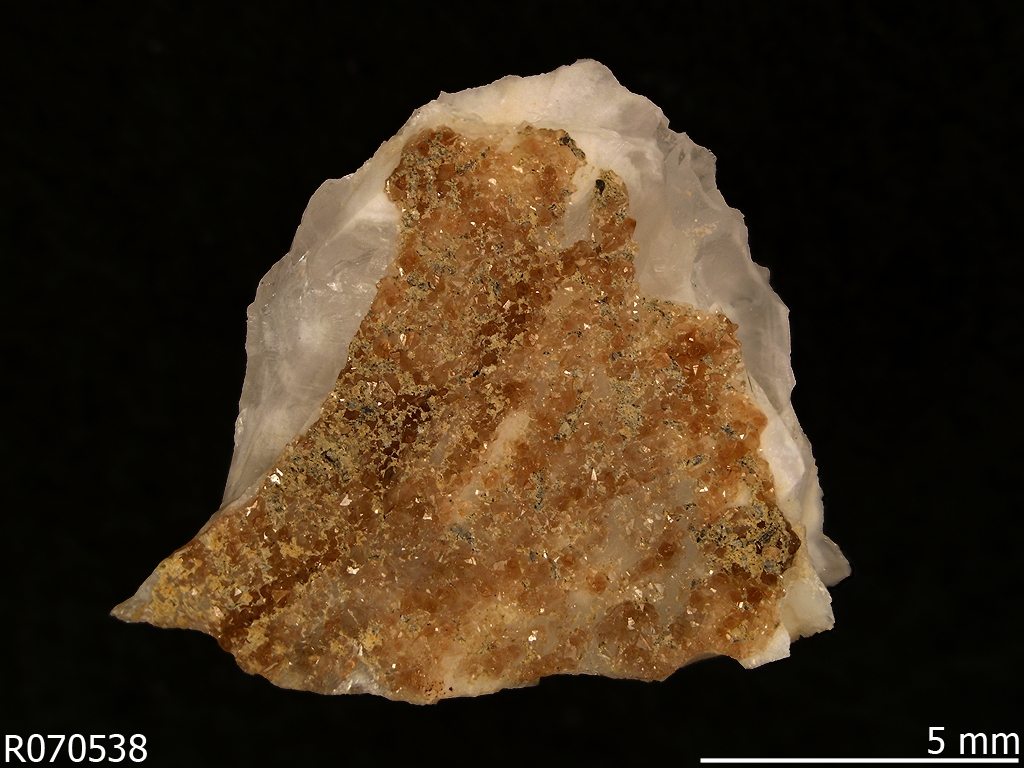Childrenite
Childrenite is a rarely occurring mineral from the mineral class of " phosphates, arsenates and vanadates ." It crystallizes in the orthorhombic crystal system with the chemical composition (Fe, Mn) Al [( OH) 2 | PO4 ] • H2O and usually develops pyramidal crystals with dicktafeligem to short prismatic habit, but also groups radialstrahliger or moderate mineral aggregates and crusty coating of yellow-brown to brown in color with white stroke color.
Childrenite forms with Eosphorit a complete mixed batch.
Etymology and history
Childrenite 1823 was first discovered named at Tavistock (Devon) in England and described by Henry James Brooke ( 1771-1857 ), of the minerals by the English chemist and mineralogist John George Children ( 1777-1852 ).
Classification
In the now outdated but still in use 8th edition of the mineral classification by Strunz the Childrenite belonged to the mineral class of " phosphates, arsenates and vanadates " and then to the Department of " water -containing phosphates with foreign anions ", where he along with Eosphorit and Ernstit an independent group was formed.
The 9th edition used since 2001 and valid by the International Mineralogical Association (IMA ) of the Strunz'schen Mineral classification assigns the Childrenite also in the class of " phosphates, arsenates and vanadates " and there in the department of " phosphates with additional anions, with H2O " one. This division is, however, precisely divided by the size of the involved cations and the ratio between the other anions and the phosphate complex, so that the mineral according to its composition in the subsection "With only medium-sized cations, (OH, etc.): RO 4 = 2: " is to find where it is named the " 1 Childrenitgruppe "with the system no. Is 8.DD.20 and the other members Eosphorit and Ernstit.
The classification of minerals according to Dana assigns the Childrenite in the class of " phosphates, arsenates and vanadates ," there but in the department of " water -containing phosphates, etc., with hydroxyl or halogen". Here it is also named the " Childrenitgruppe " with the system no. 42.07.01 and the other members Eosphorit, Ernstit and Sinkankasit within the sub-division of " water -containing phosphates, etc., with hydroxyl or halogen, and the general composition (AB ) 5 ( XO4 ) 3Zq • x (H2O) ".
Education and Locations
Childrenite forms as a conversion product of primary phosphate minerals from hydrothermal solutions at low temperatures in complex granite pegmatites. Accompanying minerals include apatite, kaolinite, pyrite, quartz, siderite, different tourmalines and Zinnwaldite.
Worldwide, Childrenite so far (as of 2010) are detected in about 70 localities. In Germany, the mineral, especially in the area of Waidhaus ( Hagendorf, silver mine ) in the Upper Palatinate Forest (Bavaria) and in the Greifensteine in honor Friedersdorf (Saxony ) was found. In Austria, the mineral appeared primarily at Laggerhof and on Hahnenkofel near the Lake Millstatt, but also in Wolfsberg.
Other localities include Australia, Bolivia, Brazil, Canada, Finland, France, Japan, Kosovo, Portugal, Spain, Sweden, the United Kingdom ( UK) and in the United States of America (USA).
Crystal structure
Childrenite crystallizes in the orthorhombic space group BBCM or BBA2 with the lattice parameters a = 10.39 Å; b = 13.39 Å and c = 6.92 Å, and eight formula units per unit cell.










